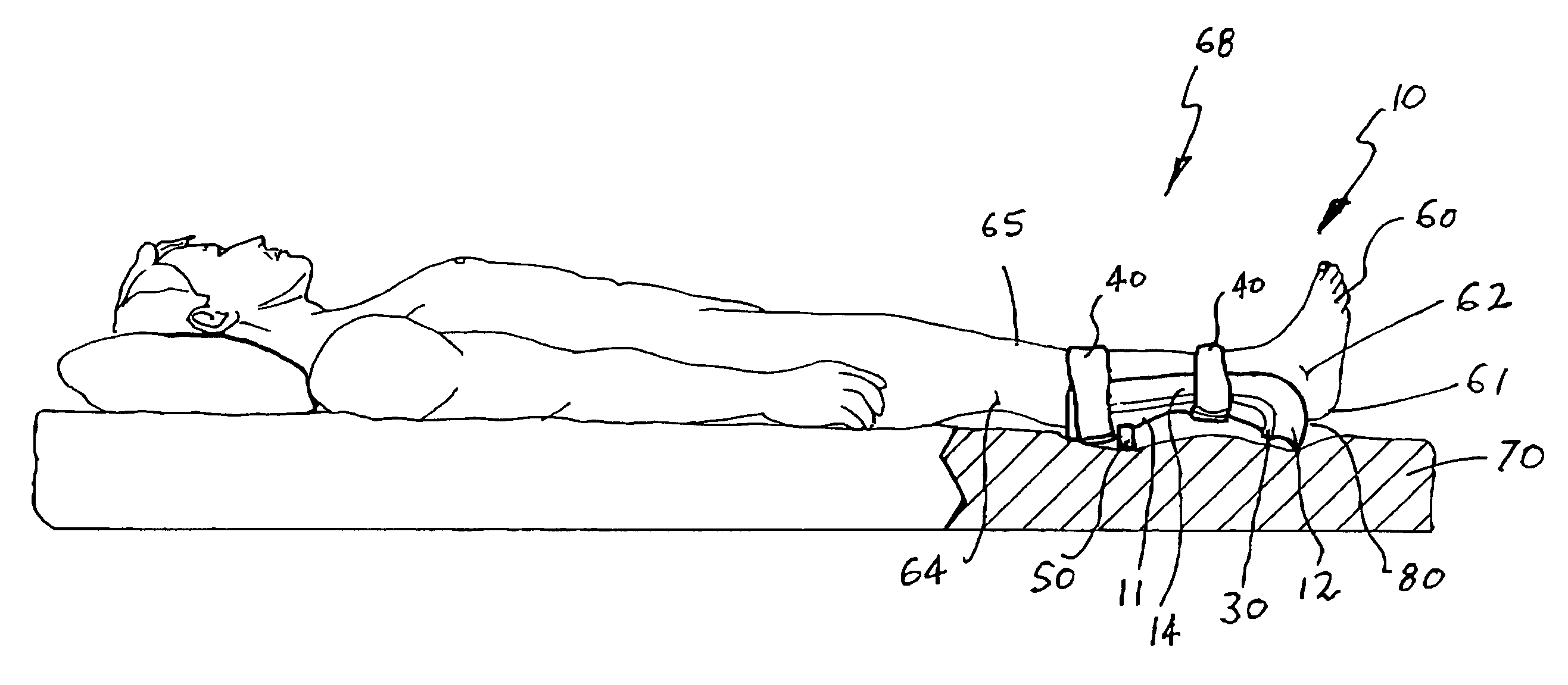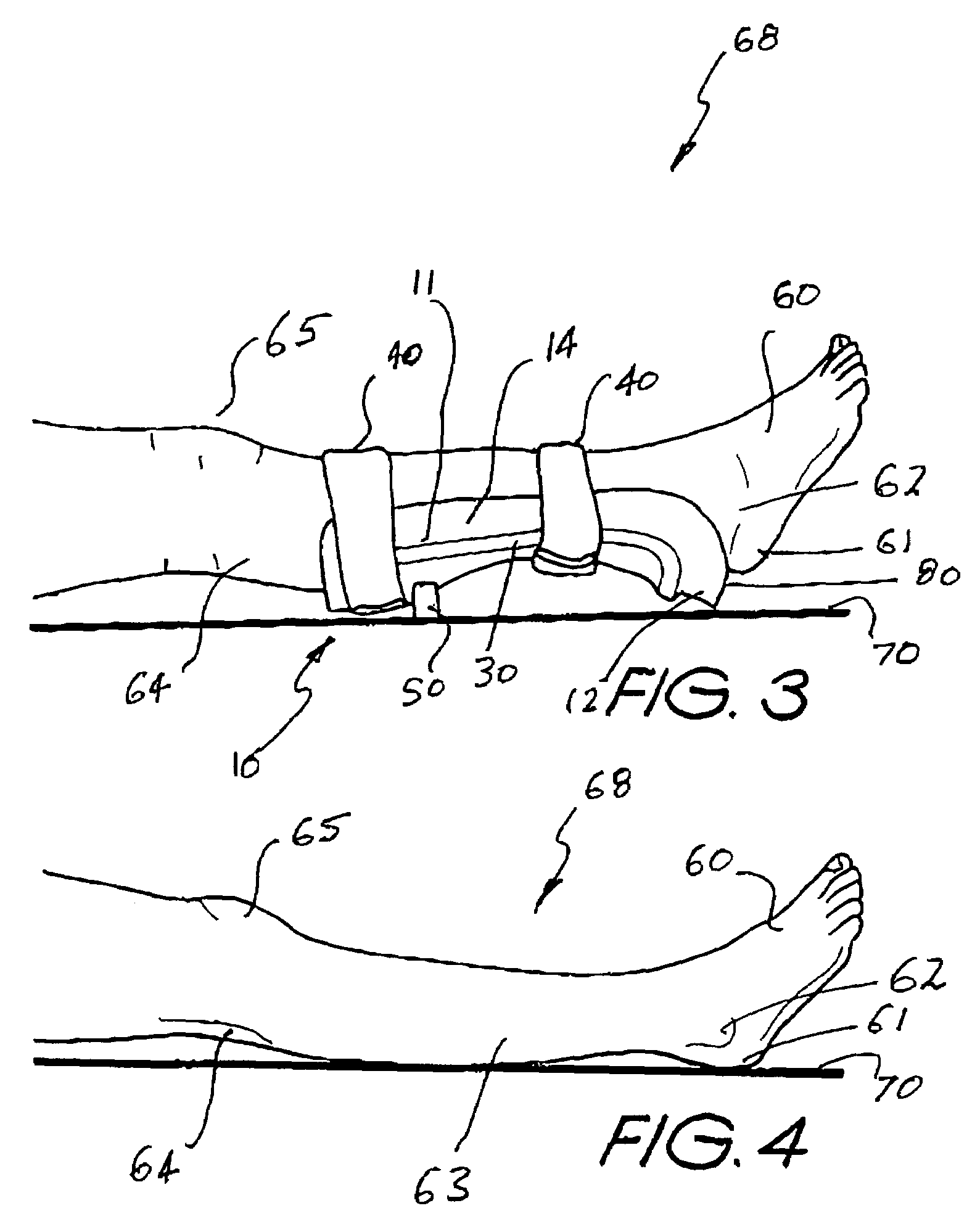Pressure ulcer prosthesis and method for treating and/or preventing pressure ulcers
a pressure ulcer and prosthesis technology, applied in the field of pressure ulcer prosthesis and method for treating and/or preventing pressure ulcers, can solve the problems of diabetic foot ulcers, high risk of developing ulcers in the calcaneus and lateral malleolus of the foot, and patients with diabetes are highly susceptible to developing diabetic foot ulcers
- Summary
- Abstract
- Description
- Claims
- Application Information
AI Technical Summary
Benefits of technology
Problems solved by technology
Method used
Image
Examples
Embodiment Construction
[0042]The pressure ulcer prosthesis 10 of the preferred embodiment of the present invention comprises an elongate body 11 to support a patient's limb, said body 11 having: a longitudinal axis 90 and a longitudinally extending support surface 13 for the limb, said support surface 13 in transverse cross-section being arcuate and concave; and a distal end 12 with a further surface 80 extending from the support surface 13 so as to diverge from the longitudinal axis 90 such that a portion of the limb adjacent the further surface 80 is relieved from pressure.
[0043]In preferred embodiments, the body 11 in transverse cross-section is arcuate and concave.
[0044]The preferred prosthesis 10 further comprises a liner 20 for lining the support surface 13 of the prosthesis body 11. The liner 20 is preferably formed from a high density foam. Preferably, the liner 20 has substantially the same shape as the support surface 13 of the prosthesis body 11. Of course, where appropriate, a liner surface 21...
PUM
 Login to View More
Login to View More Abstract
Description
Claims
Application Information
 Login to View More
Login to View More - R&D
- Intellectual Property
- Life Sciences
- Materials
- Tech Scout
- Unparalleled Data Quality
- Higher Quality Content
- 60% Fewer Hallucinations
Browse by: Latest US Patents, China's latest patents, Technical Efficacy Thesaurus, Application Domain, Technology Topic, Popular Technical Reports.
© 2025 PatSnap. All rights reserved.Legal|Privacy policy|Modern Slavery Act Transparency Statement|Sitemap|About US| Contact US: help@patsnap.com



